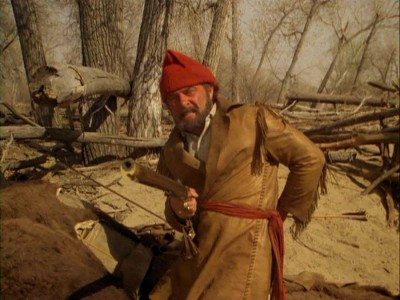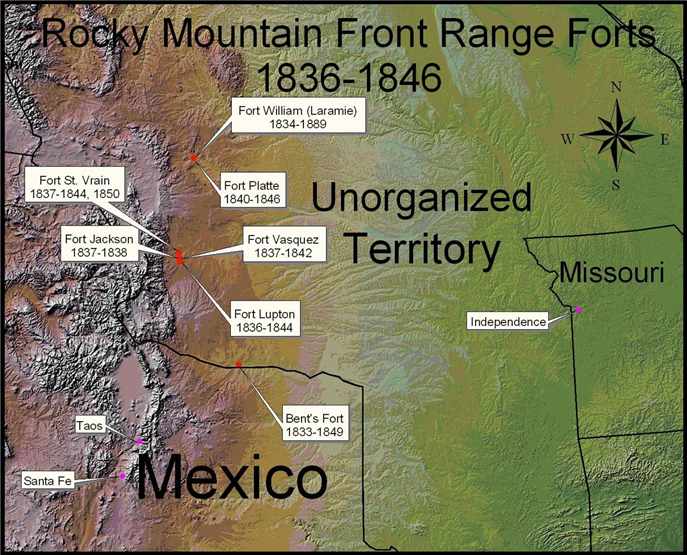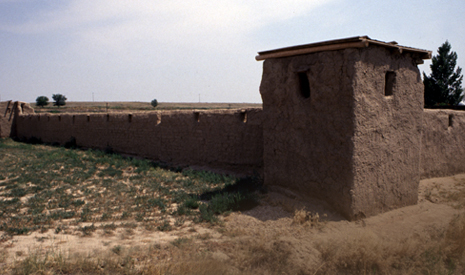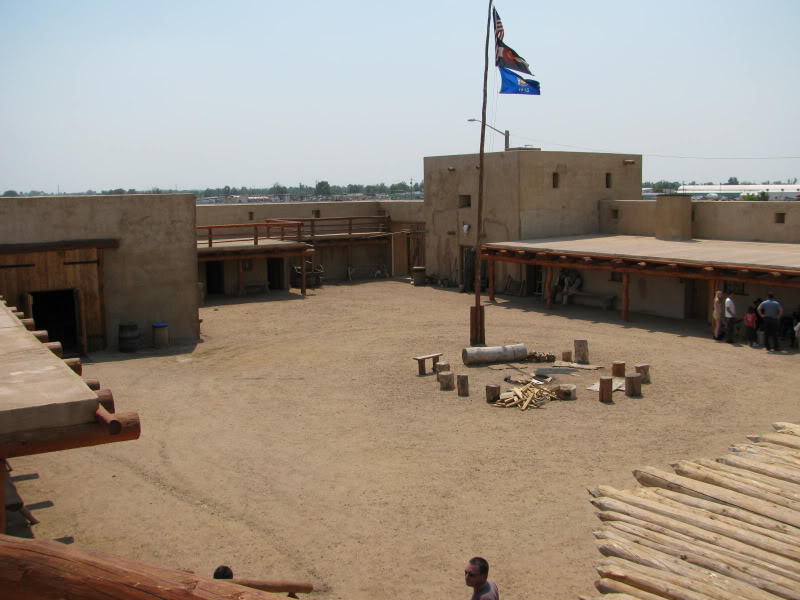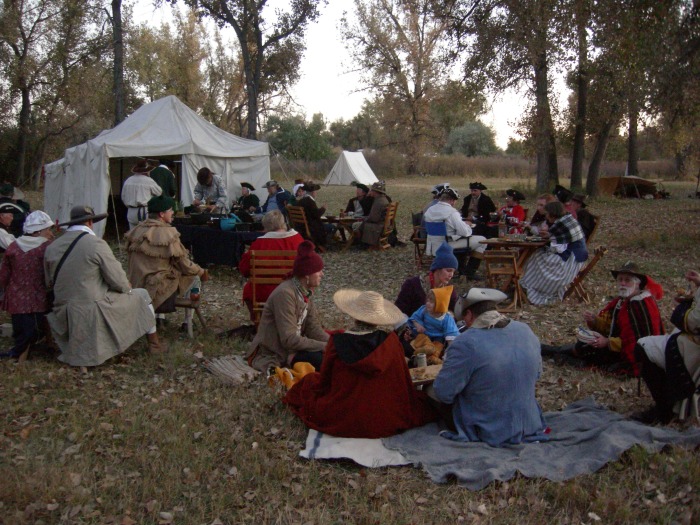The Revenant is a very popular movie loosely based on a real-life event.
The movie is enjoyable and well worth seeing. Even if the specific history is off, the film has a feeling of verisimilitude that is true of the era.
And what era would that be? The “Mountain Man” era (an era really about fur trapping) went from the time of Lewis and Clark’s journey to roughly the late 1840s.
It was an era that has been both romanticized and reviled. Sometimes for good reasons. And sometimes, people miss the context of when the history took place.
In any case, this article is not looking at the history of this time specifically.
Instead, I’m looking at the area itself. For those like me who are interested in this era, some local Colorado places were an essential part of it. Much of this fascinating chapter in North American history took place not far from where I live. And, being a bit of a history buff, I welcome the fact I can explore this critical part of US history up close.
An excellent primer on this comprehensive history is Fur, Fortune, and Empire: The Epic History of the Fur Trade in America by Eric Jay Dolin.
But, if you want to read something more Colorado specific, the chapters featuring Pasquinel in Michener’s Centennial gives a wonderful feel for this era.
YouTube has the mini-series episodes online as well.
Michener based Pasquinel on the prominent fur-trader and, later, businessman Ceran St. Vrain.
Colorado and New Mexico both felt the influence of St. Vrain.
A well-known peak dominates the views when heading towards Rocky Mountain National Park, a vital waterway is named after him, and even more numerous other places in Colorado.
“The Trappers Trail” (or the Taos Trail) ran through what is now Colorado. The lucrative trade network connected to Bent’s Old Fort on what was the US/Mexican border to the south and Ft. Laramie (originally Ft. William) in Wyoming to the North. Through a network of trails and routes, the equivalent of millions of dollars of trade goods exited Colorado and went along the Santa Fe Trail or the Great Plate River Road and on to significant trading areas such as Santa Fe, Taos, St. Louis, or New Orleans and eventually to Europe.
The forts were not military in nature (initially, anyway) but were trading posts—a place to pick up gear, some luxury goods, and sell some hard-earned pelts.
The northernmost fort in the Colorado area, and arguably the one with longer-lasting historical significance, was Ft. Laramie in what is now Wyoming.
From Boulder, Ft. William (at Ft. Laramie) ‘s original site is only a three-hour drive away.

Along with the Platte at Ft. Laramie
The Platte formed a natural highway of sorts in Wyoming’s lower terrain vs. the much higher landscape of the Colorado Rockies.
Once Ft. William became Ft. Laramie, this site became prominent on the Oregon Trail and other immigrant trails.
At the other end of the Colorado area, and about four hours drive from Boulder is the site of Bent’s Old Fort. Named after William Bent (a partner of Ceran St. Vrain), this fort was a key outpost during the fur-trading era.

A reconstruction of the trading fort abandoned in the 1840s is now in place of the original fort. Bent’s Fort sits along the Arkansas River on the former US/Mexican border before 1848. A key location for trade and right on the old Santa Fe Trail.
Even today, the part of Colorado south of the Arkansas still retains its pre-US heritage. Many place names are in Spanish; the feel is more of northern New Mexico than the Colorado Rockies, and, lastly, you can find some delicious food.
Lastly, and certainly not least, a mere 45 minutes away from Boulder is the town of Ft. Lupton. A sleepy town on the Platte, Ft. Lupton is the home of the “Four Forts on the Platte.”
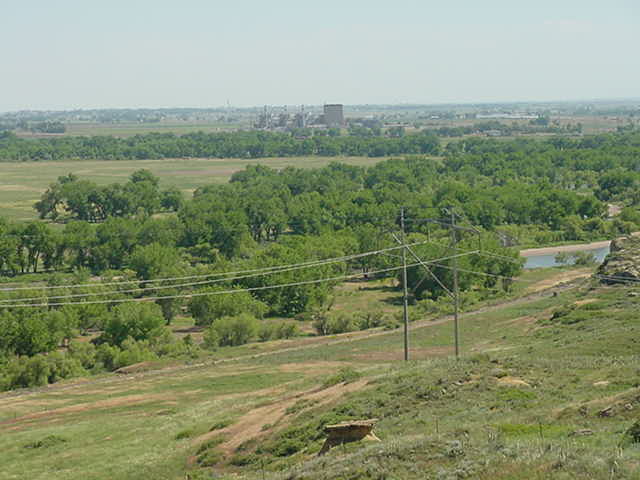
Looking toward the modern Ft. Lupton and along the S. Platte. From http://stvrainsfort.homestead.com/fortpix.html
The four forts were:
- Fort Vasquez
- Fort Lancaster (Fort Lupton)
- Fort George (Ft. St. Vrain)
- Fort Jackson
These forts were the only outposts of American influence between Ft. Laramie and Bent’s Old Fort. Six hours or so of driving in a modern automobile, the few hundred miles between these two points would have been much more daunting without these four forts located in what is now the town of Ft. Lupton.
The four forts were all constructed within 15 miles of each other. The competition was fierce. The equivalent of millions of dollars in trade goods went through these forts.
Fort Vasquez was the first fort located along what is now US Highway 85..aka, the Centennial Highway. Named after another person whose name graces many Colorado landmarks, the current reconstruction was made at the original site by the Works Progress Administration in the early 1930s.
The reconstruction of the fort itself is not terribly accurate but does give an excellent feel for this area and the reason for the fort’s location and the fur trade. From Ft. Vasquez, you can see The Rockies, and the Platte is nearby. The valley is broad and, no surprise, a modern road, more or less, follows the old trappers’ route.
The museum inside is excellent. Genuine artifacts from this period abound. And a very knowledgeable staff will answer questions.
Moving down the road, quite literally, is the reconstructed site of Ft. Lupton / Lancaster.
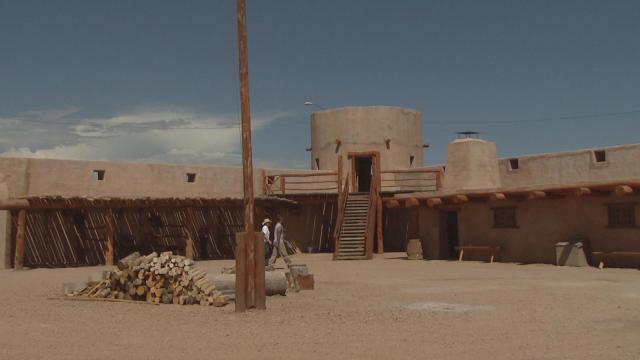
From http://denver.cbslocal.com/2011/09/04/the-new-fort-lupton-rises-on-the-banks-of-the-south-platte-river/
A labor of love done by the area residents in recent years, the reconstructed fort sits along the Platte.
A gentleman we spoke to (all-around handyman, knowledgeable local historian, and he played the piano rather well!) was very proud that the community accomplished the reconstruction with all local (no federal) money.
The reconstructed fort is set back in a light industrial area and seems out-of-place at first. That is until a person walks the grounds. With the Platte flowing nearby and the groves of cottonwoods present, with a little imagination, a visitor can conjure the times from nearly 200-years ago.
A few times a year, the park across the river from the fort hosts The Trapper Days Rendezvous. Various people show up and camp with period costumes and gear. We caught the tail end of the Rendezvous one weekend, and I thought it was rather interesting—a surprise on the otherwise quiet day.
A little more off the beaten path is the site of Ft. St. Vrain.
To reach this site, go down some old farm roads, through some private property where there is an easement, and finally dead-ending at the Platte bank.

The site of Ft. St. Vrain. From Wikipedia
It is a quiet and peaceful area. Traders built the first on the site of a bluff and above the floodplain.
The ruins existed up until 1951. Alas, the owner of the property graded what little remained. Many archeological items of interest were, no doubt, lost.

Spring pond on site. From Wikipedia.
All to do now is enjoy this peaceful area that is really off the beaten path.
Ft. Jackson was more than likely constructed with a wood palisade vs. adobe. The construction of this fort was to put financial pressure on competing forts, possibly. The remnants are long gone. Officially, the site of where the fort location is unknown. Unofficially, one local indicated the site is located on private property and is evident if you know where to look…
Finally, in Colorado, it is effortless to go where the fur trappers went.
Many of our roads were initially native trading routes. The various mountain passes were used by fur trappers and the indigenous nations when they went back and forth between their summer and winter homes.

Devil’s Thumb Pass is one such area. Winter Park (Fraser Valley) on one side; Boulder valley on the other.
And, of course, Longs Peak is well-known for the “stone beaver” climbing to the summit.

The “nose” is the sharp point on the left.
For many, a fur trapper or a local Arapaho, a sign perhaps of money to be had nearby.
***
The Colorado area is rich in natural beauty and history as well. With The Revenant’s popularity, maybe some of these local areas connected to that period of history, a time of history gaining a bit more interest, will be a little more well-known.
Further reading:
- Centennial by James A. Michener.
- Malachite’s Big Hole – Fascinating website. As the authors state: “This Web Page is dedicated to the arts, skills, and lore of the Mountain Man and is intended to be a resource for all aspects of life in the mountains and the men who lived there. The focus of the site is on the American Mountain Man from 1804 to 1840..”
Finally, a modern Voyageur take on this concept… (slightly graphic) 🙂

